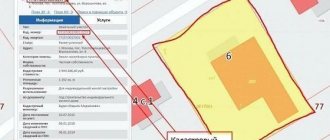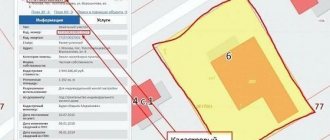Encumbrances on land
When purchasing a plot of land, experts do not recommend immediately drawing up a purchase and sale agreement. There is a possibility that the land has some restrictions on its use, which in legal terms are called encumbrances. Let's figure out what restrictions can be imposed on a land plot and what consequences they entail for the owner of the plot.
The encumbrance of a land plot is a restriction of the owner in his right to use and dispose of the land that belongs to him. It may include the following:
- restrictions on the possibility of use (for example, a ban on placing industrial facilities in protected zones);
- the obligation to make land available for limited use by other people or organizations (easement);
- restrictions on the right of ownership and disposal (mortgage, arrest, etc.).
Encumbrances may be imposed by law or regulation, by agreement (mortgage, lease, etc.) or by court order (public easement, lien, etc.).
According to Article 1 of the Town Planning Code of the Russian Federation, zones with special conditions for the use of territories include security, sanitary protection zones, zones for the protection of objects of cultural heritage of the peoples of the Russian Federation, water protection zones and other zones established in accordance with the legislation of the Russian Federation. Among other things, there may be encumbrances associated with real estate objects located on it that have the status of cultural monuments.
as encumbrances on a land plot in Russian legislation:
- easement;
- mortgage;
- rent;
- arrest.
An easement is a limited right of use that another person acquires in relation to someone else’s land plot. Typically, such an encumbrance is imposed to ensure access to the property.
Another example of an encumbrance is a mortgage. The subject of a mortgage can be not only ownership, but also long-term lease.
Of the lease agreements, those that are designed for a year or more are subject to registration as an encumbrance. Lease does not prevent the owner from making transactions with the site, and when purchasing it, the new owner may find a tenant on the site. However, this should not result in termination of the contract.
Finally, a fairly common type of restriction is the seizure of a land plot. Any transactions related to the sale, donation or other disposal of this land will be prohibited and will not be able to register with Rosreestr.
Restrictions imposed on land are subject to mandatory registration along with ownership rights. Rosreestr authorities make appropriate entries in the Unified State Register.
The best option, if in doubt, is to contact the offices for receiving and issuing documents for the provision of public services of Rosreestr or multifunctional centers (MFC) and order an extract for the area you are interested in.
You can check a land plot for the presence of encumbrances without contacting the reception offices or MFC directly. Today, on the Rosreestr website (rosreestr.ru), it is possible to obtain reference information on a real estate property by its address or cadastral number.
General information about encumbrances
The legislation does not have a clear answer to what an encumbrance on a land plot is. This concept was contained in the already abolished Art. 1 . It followed from the law that encumbrances should be considered conditions and prohibitions that limit the right holder in the exercise of ownership and other proprietary rights to real estate: disposal, possession, use.
Although the normative act has lost force, the definition established by it is still relevant. Its analysis allows us to understand the essence of the phenomenon and characteristics:
- An encumbrance is a restriction that restricts certain rights of the land owner.
- It is intended to protect the subjective rights of third parties in whose favor it is established: creditor, tenant, mortgagee.
- The encumbrance is not associated with the deprivation of the owner of his rights, since, as a rule, it is temporary.
To understand what an encumbrance on a garden plot means, it is important to understand what specific allotment we are talking about. The current legislation contains about a dozen restrictions. Each of them has a unique meaning: some are a measure of responsibility/coercion, others are a form of securing obligations, and others are property-obligatory legal relations of owners and third parties.
Moreover, all of them can arise only for a limited number of reasons.
Find out more about what an encumbrance on real estate is
Consequences of the introduced encumbrance
If you are planning a purchase, you must first check whether there are any prohibitions regarding the right of use or disposal.
- How to correctly draw up a contract for the sale and purchase of a land plot?
This issue is important for the buyer because encumbrances seriously limit the range of actions that the landowner could take:
- A mortgage implies deprivation of the right to sell or temporarily lease land to outsiders, unless the prior consent of the holder of the mortgage is obtained (for a loan collateral, the mortgagee is the bank).
- The establishment of an easement provides for the preservation of the right to use the site even after the sale, until the period of validity of the easement expires.
- While the lease agreement is in effect, the owner cannot use the land for its intended purpose, since this right has been transferred to the tenant.
Sale of land with encumbrances
The answer to the question whether it is possible to sell a plot with an encumbrance depends on its type. In fact, the only restriction that categorically prohibits a purchase and sale transaction is arrest. Until it is removed, it is impossible to alienate the property.
The rest of the encumbrances one way or another allow for purchase and sale, but with some features:
- alienation of a plot under a mortgage, pledge or prohibition on alienation is possible only with the consent of the mortgagee/creditor;
- the sale of land with an encumbrance in the form of a lease or easement does not terminate them. The right to use the land is retained by third parties to the same extent even after the transfer of ownership to the buyer;
- Land classified as special zones may be sold without obtaining permission.
The purchase and sale procedure itself does not provide for any significant features. Everything happens according to the standard scheme: concluding an agreement → signing a transfer deed → registering the transfer of rights.
The only important condition is to notify the buyer of the presence of restrictions and indicate them in the documents.
A typical contract for the purchase and sale of a land plot with an encumbrance can be viewed below.
What it is
Land plots can be transferred to citizens and legal entities for ownership, as well as for temporary or indefinite use. In each of these cases, the owners have a legal right to use the land for its intended purpose (for example, agricultural land can only be used for growing agricultural products or other similar purposes). Restrictions on the rights of owners or possessors are permitted only in cases provided for by law or based on the terms of contracts.
Legislative acts allow the following forms of encumbrances on land:
- prohibitions and restrictions established in regulations and targeted restrictions on certain areas of land use (for example, a ban on constructing industrial and production facilities on lands allocated for personal farming);
- restrictions associated with the emergence of a public or private easement, i.e. the ability of third parties to use someone else's land plot;
- prohibitions and restrictions related to the emergence of legal claims - arrest to secure a claim or to ensure enforcement actions;
- restrictions on the ownership and disposal of land that arise with the consent of the copyright holder (for example, a mortgage when purchasing land on credit);
- temporary restrictions associated with the conclusion of a lease agreement (when transferring ownership of land, lease relations are maintained for the entire duration of the agreement).
Thus, various types of restrictions can arise directly by force of law, under the terms of contracts and agreements, as well as on the basis of judicial acts.
Based on the analysis of the norms of the Land Code of the Russian Federation and the Civil Code of the Russian Federation, we can distinguish the following types of encumbrances that can be established on land plots:
- public and private easements;
- mortgage encumbrance;
- a lease agreement whose term exceeds one year;
- arrest imposed by a judicial act or resolution of an official of the FSSP;
- trust management;
- concession.
In some cases, a prohibition or encumbrance may arise based on the special status of the property located on the site. For example, a historical heritage site automatically imposes restrictions on the corresponding land area.
Types of restrictions and special conditions
Having encumbrances on his property, its owner is limited in the ability to conduct transactions with it and must fulfill certain conditions.
Reason for restrictions:
- A legal action that seizes or orders the installation of an easement;
- A legal document between two or more people. Commissioning of real estate for a period exceeding 12 months, mortgage loan, etc.;
- Legislative act.
Restricted areas
When a piece of land is located next to a restricted area, restrictions are imposed on it. There are two types of such zones:
- Security . On the territory of which there are water sources, natural reservoirs, and health complexes. They are under the protection and protection of the SES. Industrial production and stations monitoring the hydrological regime may be located within its boundaries;
- Sanitary protective . They are surrounded by objects that have a negative impact on residential areas (chemical industry enterprises or with increased noise and vibration). The zone is determined by the characteristics of the object and the nature of the encumbrance will depend on this. In such a place it is prohibited to build housing and buildings for permanent residence of people.
Different types of zones impose corresponding encumbrances.
Methods for checking a property
The presence of an encumbrance is a direct indication of a limited range of actions in relation to real estate. Rights are limited after appropriate changes are made to the Rosreestr database. The basis for entry will be a new transaction with the simultaneous registration of a pledge, or a separate application from citizens with the establishment of a private easement by agreement. While the entry in the state register is valid, the owner’s rights are limited.
To find out about the presence of encumbrances on a plot, contact the Rosreestr department directly or indirectly with a request:
- territorial division of the MFC at the location of the site;
- on the government services website through authorized access remotely.
- Validity period of a cadastral passport for a land plot
The request to Rosreestr indicates the identification characteristics of the site - its cadastral number or the address of the object.
Information about existing encumbrances is publicly available. Any interested person can receive them. This usually happens when there is an intention to purchase land, when it is important to find out the volume of rights being acquired. If the encumbrance is confirmed, this is directly reflected in the purchase price. Few people will like the fact that the land plot cannot be used to its full potential due to the presence of an easement or a tenant.
A document confirming the absence of obstacles to the allotment will be an extract from the Unified State Register of Real Estate. Since binding conditions may be introduced at any time, the most current statement is requested for the transaction.
How is it determined
The current legislation does not establish a precise definition of encumbrance on land. It was mentioned in the abolished Article 1 of Law No. 122-FZ, approved on July 21, 1997. According to the repealed norm of the law, an encumbrance is considered to be prohibitions and restrictive conditions that prevent the owner from exercising his rights in relation to the object - to dispose, own and use the land.
This definition remains relevant to this day, without changing the essence of the burden. It must protect the rights of a third party interested in the property - the tenant, the creditor, the lien holder.
When encumbrance occurs, conditions arise that constrain the rights of the owner, but do not completely deprive him. The effect of restrictions is most often limited to a specific period of time.
Types of encumbrances
Real estate experts divide them into five main types:
Property is rented
Perhaps the most common type of encumbrance. According to the law, a lease agreement must be drawn up between the tenant and the landlord. It defines all aspects of the transaction and is signed by both parties. Only then will it have legal force. Oral agreements are not recognized by law.
After all formalities have been completed, the lessor receives the right to temporarily own and use the property in his own interests, while at the same time certain restrictions are imposed on the owner. For example, he is obliged, if he wants to sell his property, to notify the tenant without fail, and to transfer to the buyer, along with the house and land, all rights and obligations under the concluded lease agreement.









